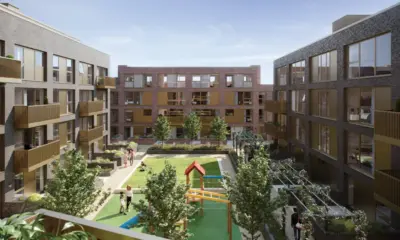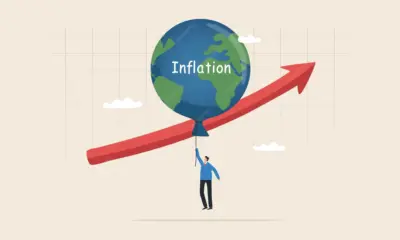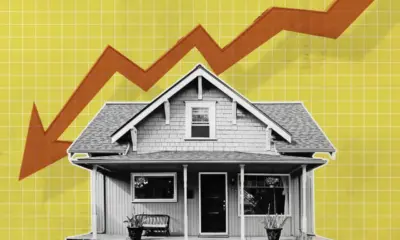Business
London Residential Prices Soften as Mortgage Costs Climb

Introduction
The London housing market, long a barometer of the UK’s economic health, is showing signs of cooling as higher borrowing costs take their toll. After years of price growth driven by limited supply, overseas investment, and cheap credit, residential property values are now softening across most boroughs. Analysts attribute this trend primarily to rising mortgage rates, which have eroded affordability and tempered demand among both first-time buyers and investors.
In 2025, the average London home price fell by roughly 2.4 percent compared with the previous year, according to major property market surveys. Though modest by historical standards, the decline marks a notable shift from the post-pandemic boom that saw double-digit annual growth. The adjustment reflects a broader recalibration of the housing market as the era of ultra-low interest rates comes to a close and households adjust to a more challenging borrowing environment.
The Weight of Higher Mortgage Costs
At the center of London’s housing slowdown lies the steady rise in mortgage costs. The Bank of England’s base rate, which currently stands at four percent, has significantly increased monthly payments for new borrowers and those refinancing existing loans. Average mortgage rates for five-year fixed deals have climbed above 5.2 percent, compared with less than two percent just three years ago.
This shift has had a profound impact on affordability. The average household in London now spends more than 40 percent of its income on mortgage repayments, the highest proportion in over a decade. For many potential buyers, especially first-time purchasers, the combination of elevated property prices and higher borrowing costs has placed home ownership out of reach.
As a result, mortgage approvals for home purchases have declined sharply. Banks and building societies report that new lending volumes have fallen by nearly 20 percent since early 2024. The slowdown in buyer activity has led to an accumulation of unsold properties and an increase in the average time homes remain on the market. Sellers are increasingly accepting lower offers, reversing years of upward price pressure.
Shifting Buyer Demographics and Market Segments
While the overall trend points to softening prices, the impact varies across different market segments. Prime central London properties, particularly those in areas such as Kensington, Chelsea, and Westminster, have been somewhat insulated from rising borrowing costs due to the prevalence of cash buyers and international investors. However, even in these high-end neighborhoods, transaction volumes have declined as global economic uncertainty and currency fluctuations weigh on sentiment.
In contrast, the outer boroughs, where buyers are more dependent on mortgage financing, have experienced more significant price adjustments. Areas such as Croydon, Barking, and Hounslow have seen declines of between three and five percent over the past year. Family homes and newly built properties aimed at first-time buyers are facing reduced demand, prompting developers to offer incentives such as stamp duty contributions and mortgage assistance schemes.
There has also been a noticeable shift in buyer priorities. With remote and hybrid working patterns now deeply entrenched, many buyers are prioritizing larger living spaces and suburban locations over central proximity. This has led to renewed interest in commuter towns surrounding London, though even these areas are now facing similar affordability pressures as borrowing costs rise nationwide.
Rental Market Pressure
As prospective buyers retreat from the market, the rental sector has come under intense strain. Demand for rental properties in London has surged, pushing average rents to record highs. The typical rent for a one-bedroom flat in Zone 2 now exceeds £2,000 per month, an increase of nearly 10 percent from the previous year.
Landlords, too, are feeling the squeeze of higher interest rates, as many have buy-to-let mortgages linked to variable rates. To offset the increase in their financing costs, many have passed the burden onto tenants. This dynamic has contributed to what analysts describe as a “rental affordability crisis,” with many households spending an unsustainable portion of their income on housing.
Some landlords are choosing to exit the market altogether, selling their properties due to reduced profitability and tighter regulatory requirements. While this has led to a gradual increase in available housing stock for sale, it has simultaneously exacerbated the shortage of rental properties. The interplay between high mortgage costs and limited rental supply has created a challenging environment for both buyers and tenants.
Construction and Developer Response
The slowdown in housing transactions is also affecting the construction sector. Developers are delaying new projects and focusing on completing existing ones. Planning approvals in Greater London have fallen to their lowest level since 2013, reflecting uncertainty over future demand. Rising costs of materials and labor, combined with higher financing expenses, have further constrained development activity.
Affordable housing projects, which rely heavily on government funding and developer contributions, are particularly vulnerable. As profit margins narrow, developers are renegotiating commitments or reducing the proportion of affordable units within new schemes. This risks deepening London’s housing supply imbalance over the medium term.
However, there are some signs of adaptation. Developers are increasingly exploring partnerships with institutional investors to deliver build-to-rent projects, which offer more stable long-term returns. The rise of green housing initiatives, such as energy-efficient retrofits and low-carbon developments, is also attracting investment interest from sustainability-focused funds.
Broader Economic and Policy Implications
The cooling of London’s property market has broader implications for the economy. Residential investment and related industries such as construction, finance, and retail contribute significantly to the city’s GDP. A prolonged downturn could weigh on employment and consumer spending, though policymakers view the current correction as a healthy adjustment rather than a systemic risk.
The government and the Bank of England continue to monitor housing affordability closely. While there is little appetite for direct market intervention, officials have signaled that mortgage stress-testing requirements could be reviewed to reflect changing conditions. Meanwhile, first-time buyer support schemes and shared ownership initiatives remain important tools for sustaining entry-level demand.
Economists believe that prices are likely to stabilize in the coming year as the market adjusts to the new interest rate environment. If inflation continues to ease and borrowing costs moderate, modest price growth could return by late 2026. Yet much depends on the trajectory of monetary policy and the broader economic outlook.
Conclusion
London’s residential property market is undergoing a period of necessary recalibration. The surge in mortgage costs has cooled the momentum built during the post-pandemic boom, ushering in a phase of more cautious buying and realistic pricing. While this has created challenges for homeowners and developers, it may ultimately restore a degree of balance to a market long criticized for its lack of affordability.
The path forward will hinge on how quickly interest rates stabilize and whether wage growth can keep pace with the cost of borrowing. For now, London’s housing market is defined by adjustment rather than crisis—a shift from exuberant expansion to measured correction. The coming year will test the resilience of both buyers and sellers as they adapt to a new era of higher costs, slower growth, and evolving expectations in one of the world’s most closely watched property markets.




















